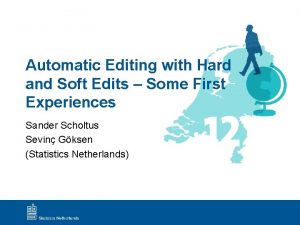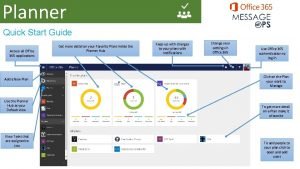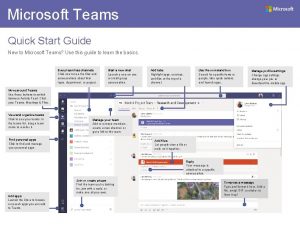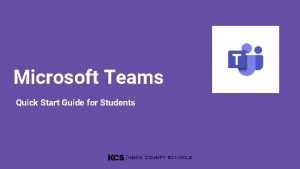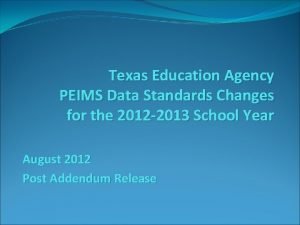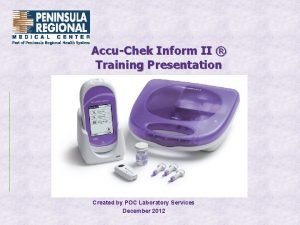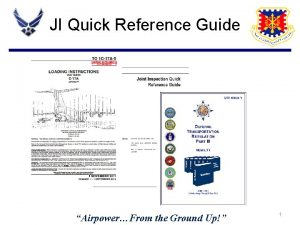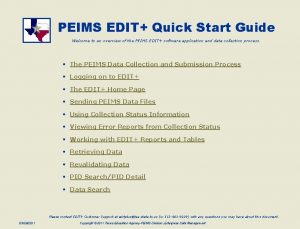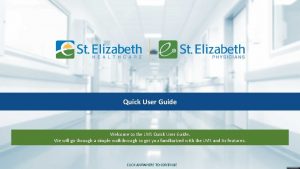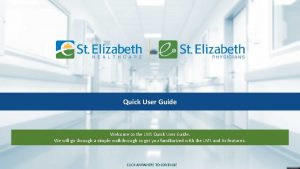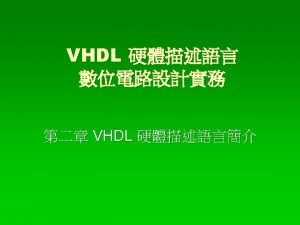PEIMS EDIT Quick Start Guide Welcome to an






















- Slides: 22

PEIMS EDIT+ Quick Start Guide Welcome to an overview of the PEIMS EDIT+ software application and data collection process. • The PEIMS Data Collection and Submission Process • Logging on to EDIT+ • The EDIT+ Home Page • Sending PEIMS Data Files • Using Collection Status Information • Viewing Error Reports from Collection Status • Working with EDIT+ Reports and Tables • Retrieving Data • Revalidating Data • PID Search/PID Detail • Data Search Please contact EDIT+ Customer Support at editplus@tea. state. tx. us (or 512 -463 -9229) with any questions you may have about this document. 03/28/2011 Copyright © 2011 Texas Education Agency-PEIMS Division, . Enterprise Data Management

PEIMS Data Collection and Submission Process 1. The district collects the required information for the October snapshot date and extracts the data from the vendor software in the format specified in the PEIMS Data Standards. 2. The district performs PEIMS data validation using EDIT+ along with PID validation. 3. If there are data errors, the district corrects the errors. Steps 1 and 2 are repeated until the data file is fatal free and complete. 4. Once the data file is correct, the district completes the file and notifies their ESC via EDIT+. 5. ESC personnel review EDIT+ reports to verify the thoroughness of the file. ESC personnel may perform further edits, if desired. 6. If the data has problems, the ESC rejects the district file. An automatic email notification is sent to the district. 7. District personnel correct the data and repeat the edits until they are satisfied with the data. Steps 4 and 5 are repeated. 8. When the ESC is satisfied with the data, it accepts the file. The information is then considered final and made available to TEA. 03/28/2011 Copyright © 2011 Texas Education Agency-PEIMS Division, Enterprise Data Management 2

Logging on to EDIT+ Logging in to EDIT+: • System security for EDIT+ is managed by the Texas Education Agency Security Environment (TEASE). • Start the application by accessing the TEASE Log On page and entering your TEA-assigned TEASE Login ID and Password. • Select the Continue button. 03/28/2011 Copyright © 2011 Texas Education Agency-PEIMS Division, Enterprise Data Management 3

Application List Page On the Application List page, choose the EDIT+ application by choosing any of the following: • The Launch button with EDIT+ Production Site selected from the drop-down list. • The underlined link for EDIT+. • The TEA logo to the left of the EDIT+ link. 03/28/2011 Copyright © 2011 Texas Education Agency-PEIMS Division, Enterprise Data Management 4

The EDIT+ Home Page When the PEIMS EDIT+ page displays, you can: • Change the collection database by choosing the select collection button. • Verify EDIT+ connectivity via a test link. • Check for daily messages. • Navigate through the site using the Contents list (the vertical navigation frame) Note: A grayed-out link indicates you do not have access to that feature. 03/28/2011 Copyright © 2011 Texas Education Agency-PEIMS Division, Enterprise Data Management 5

Sending PEIMS Data Files The PEIMS EDIT+ Home Page is the starting point for sending PEIMS data to TEA. To send a data file: • Select the Send Data link. • The Send Data for Validation page displays. 03/28/2011 Copyright © 2011 Texas Education Agency-PEIMS Division, Enterprise Data Management 6

Data Validation To send a PEIMS data file for validation: • Select the file to transfer by using the Browse button to locate your copy of the file (or you can type the full path and file name). • Click Add to place the file in the Files to validate list. • Repeat until all files are ready to be transferred and validated. • Select Continue. 03/28/2011 Copyright © 2011 Texas Education Agency-PEIMS Division, Enterprise Data Management 7

Select Validation Options For each file: • On the Select Validation Options page, select Fatals Only if you want only fatal edits verified during the validation process. Select Validation Options • Select PEIMS Edit or PID Edit. • Verify the record groups you want to validate. Groups you are authorized to work with are preselected. Click the checkbox to deselect. Note: A grayed-out checkbox in the Select Groups column indicates the record type is not included in your profile. • Choose the Select Reports button to indicate the reports you plan to generate with the data. • Select Send for validation to initiate the file transfer. 03/28/2011 Copyright © 2011 Texas Education Agency-PEIMS Division, Enterprise Data Management 8

Select Reports When you are sending a file: • You can auto-generate reports during the validation process. • One Edit Error Report is selected by default. To run a different Edit Error Report, select a different radio button. • Select a Standard Report by clicking inside the checkbox next to the report name. • To clear the reports you have chosen, click the Deselect all button. • To auto-generate the selected reports after file transfer, click Save. Note: Reports are also available to run on demand after the file has reached Edit Complete status. 03/28/2011 Copyright © 2011 Texas Education Agency-PEIMS Division, Enterprise Data Management 9

Transferring a PEIMS Data File After selecting reports you want to generate: • On the Select Validations Options page, choose Send for Validation to begin the first phase of the file submission process, transferring the file(s) to the TEA server. • A Transferring Files window appears with a status bar that displays as the file progresses through the transfer. • Clicking the Cancel button stops the transfer. The file status is changed to aborted and the file send process cancels within approximately 30 minutes. • Do not log off or close your browser until the file transfer is complete. Upon completion, you are routed to the Progress Monitor. 03/28/2011 Copyright © 2011 Texas Education Agency-PEIMS Division, Enterprise Data Management 10

Progress Monitor After the transfer process is complete, the file continues through the next phases of the submission process (loading, validation, and report generation). The process can be monitored from the Progress Monitor page. Notice that: • A list of sent files displays with the processing status of each file. • Each file’s error count is tracked as the file progresses. • You can update the information by clicking the Refresh Page button. • You can also view a list of files submitted by selecting the View the Queue link. • Upon completion of the file submission, the system provides a link to the Collection Status page. 03/28/2011 Copyright © 2011 Texas Education Agency-PEIMS Division, Enterprise Data Management 11

Using Collection Status Information • The Collection Status page is accessible from the Contents list and displays the current status of all files associated with Agent ID and user. • All columns are sortable in ascending or descending order (notice the dark blue triangle in the Date Sent column header). • The underlined file name provides a link to the File History (which displays prior file processing). • Users with Administration permissions in their EDIT+ user profile can purge certain files by selecting the file name and clicking the purge checked files button. See the EDIT+ Administrator Guide for more details. • Selecting the View button displays a list of Edit Error Reports. 03/28/2011 Copyright © 2011 Texas Education Agency-PEIMS Division, Enterprise Data Management 12

Viewing Edit Error Reports from the Collection Status Page To view an Edit Error Report: • Select the View button on the Collection Status page. One Edit Error Report is automatically generated (this is the same report selected on the Select Validation Options page). Other Edit Error reports can be run on demand (from the View Reports link). • To display a report, select the underlined report name. When the link is selected, the report opens in an Adobe Reader® window where it can be viewed, printed, or saved to your local hard drive. Note: Edit Error Reports are replaced each time a file is submitted. 03/28/2011 Copyright © 2011 Texas Education Agency-PEIMS Division, Enterprise Data Management 13

Working with EDIT+ Reports and Tables The View PEIMS EDIT+ Reports page provides links to the following: • Standard Reports–Basic reports, such as Student, Staff, Budget, and Allocation, that are run against the data and record types required for each collection period. • Special Reports–Specialized reports, such as PID Discrepancy Reports (verifies), Submission Summaries, and certain QA reports. • Student Leaver Record Submission Support Reports–Diagnostic reports, such as Presumed Underreported Students, that help districts track student leaver reporting. • Turnaround Reports–Conditional reports that are run after a 1 st Submission period is complete such as PID Discrepancy Reports (updates), certain QA reports, and Submission Cover Letters. • PID Error Rate Reports–Analysis reports that provide data to determine if a district meets the PID Error Rate Standard. • Collection Status and Lookup Tables– A link to code table data. • Table Downloads–A link to PEIMS data tables which can be viewed in Excel®. 03/28/2011 Copyright © 2011 Texas Education Agency-PEIMS Division, Enterprise Data Management 14

The Retrieve Data function enables you to retrieve a data file from the EDIT+ server and save it to your hard drive. Retrieving Data To retrieve a PEIMS EDIT+ data file: 1. Choose Retrieve Data from the Contents list. 2. Files available for retrieval are underlined. 3. Click on the underlined file name to retrieve the file. 4. A Save As dialog box displays and prompts you to specify a location to save the file. Select a location and click Save. 5. The Retrieving File page displays as the retrieval process takes the file through the decryption and decompression stages. 6. At the completion of the process, your file is saved to the location you specified. 03/28/2011 Copyright © 2011 Texas Education Agency-PEIMS Division, Enterprise Data Management 15

The Revalidate Data function allows you to revalidate a previously sent data file against selected record groups. Revalidating Data To revalidate a file: 1. Choose Revalidate Data from the Contents list. 2. Select the underlined file name you want to revalidate. The Revalidate File page displays. Note: The file does not need to be fatal free; however, only files that have transferred successfully can be revalidated. 3. Choose your revalidation criteria. Select Revalidate File. When a file is revalidated, previously run Edit Error Reports are deleted. 03/28/2011 Copyright © 2011 Texas Education Agency-PEIMS Division, Enterprise Data Management 16

PID Search provides access to a statewide database of students and staff. It is updated nightly. To conduct a PID Search: 1. Enter data in one (or more) fields. 2. Complete at least one of the required fields. Note: Required fields are indicated by an asterisk (*) next to the field name. 3. Use multiple fields, date ranges, and drop-down lists to refine the search. 4. Select the Search button to begin the search. 03/28/2011 Copyright © 2011 Texas Education Agency-PEIMS Division, Enterprise Data Management 17

PID Search Results • Search results display as a list at the bottom of the PID Search page. • Selecting any underlined name displays a PID Detail page with data for the student/staff selected. 03/28/2011 Copyright © 2011 Texas Education Agency-PEIMS Division, Enterprise Data Management 18

PID Detail The PID Detail page contains four categories of information: • The PID Record displays personal data records for student or staff including the date the record was updated and who updated the record (e. g. , District or PID Administrator). • The Submitting Districts section displays the collection in which a record is submitted as well as the campus and district reporting the information. The data file is available if the individual was reported in the last collection cycle. • The PID Change Log provides a change log of transactions for the individual’s record with the most recent change listed first. Transaction refers to the type of change. The PID Update and time are provided as well. • The PET Event History provides a history of a student’s PET events. Note 1: A PET event is an individual student’s enrollment to or withdrawal from a Campus ID of Enrollment coupled with the date the event took place. Note 2: An EDIT+ user with PID Search privileges is able to view the PET Event History through the PID Detail page without being granted access to PET. 03/28/2011 Copyright © 2011 Texas Education Agency-PEIMS Division, Enterprise Data Management 19

Data Search allows users to search through all records contained in files within their hierarchy. To conduct a Data Search: 1. Select the file name from the for file drop-down list. 2. Choose a record type by selecting the down arrow next to the Record Type field. 3. Enter a valid ID in the Student/Staff ID field. Note: If a field is not available in a record, n/a is displayed. 4. Choose sort order by selecting a radio button from the Sort Criteria field displayed at the bottom of the page. If a sort option is not available, the radio button does not display. 5. Select the Search button to begin the search. Note: Searches can be narrowed by using a wildcard search (*). 03/28/2011 Copyright © 2011 Texas Education Agency-PEIMS Division, Enterprise Data Management 20

Data Search Results On the Data Search results page: • Search results display as a list for the file selected. • You can select the underlined Student/Staff ID to display details for records within the specified file that are associated with the Student/Staff ID. • The Back button returns you to the Data Search page. 03/28/2011 Copyright © 2011 Texas Education Agency-PEIMS Division, Enterprise Data Management 21

Congratulations! You have completed a summary review of the PEIMS EDIT+ application. For detailed information about the application, including the PEIMS EDIT+ User Guide and Administrator Guide, please visit the User Materials link of the PEIMS EDIT+ external (public) website at: http: //www. tea. state. tx. us/index 4. aspx? id=3024 To receive the latest EDIT+ news, please join the EDIT+ mailing list at: www. tea. state. tx. us/list 03/28/2011 Copyright © 2011 Texas Education Agency-PEIMS Division, Enterprise Data Management 22
 Hard edits
Hard edits Digital oscilloscope in proteus
Digital oscilloscope in proteus Planner quick start guide
Planner quick start guide Microsoft teams quick start guide
Microsoft teams quick start guide Microsoft teams meeting quick start guide
Microsoft teams meeting quick start guide Quick edit+
Quick edit+ Tsds peims 2017 2018
Tsds peims 2017 2018 Peims data standards code table c022
Peims data standards code table c022 Texas education data standards
Texas education data standards Peer edit with perfection tutorial
Peer edit with perfection tutorial Quick find algorithm
Quick find algorithm Quickchek menu
Quickchek menu Accu chek inform ii glucometer
Accu chek inform ii glucometer Joint inspection quick reference guide
Joint inspection quick reference guide Texas health steps periodicity schedule
Texas health steps periodicity schedule Forevers gotta start tonight
Forevers gotta start tonight Triage start
Triage start Surveys.panoramaed.com/everett
Surveys.panoramaed.com/everett Comfortable
Comfortable The show will start soon
The show will start soon Wise men three clever are we
Wise men three clever are we Welcome tourist
Welcome tourist Kriston edit
Kriston edit
